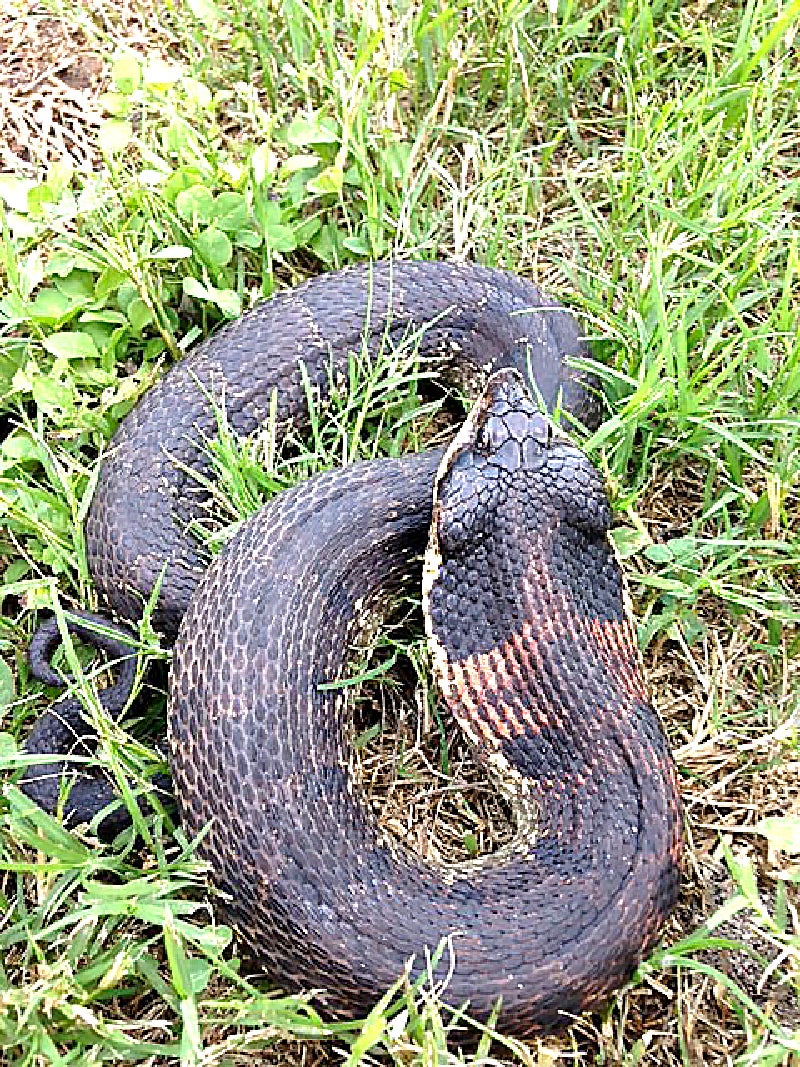MOORE OUTDOORS: Is it a cottonmouth or not?
Published 12:58 am Thursday, February 23, 2017

- The hognose snake can look like a cottonmouth at first glance. This one is spreading its body out to appear larger. They will also strike with their mouths closed, hiss and play dead. (Chester Moore Jr./Special to The News)
The swamps, marshes and waterways of Southeast Texas are loaded with snakes, and they are on the prowl right now.
In most cases every dark-colored snake encountered in these realms is labeled a “water moccasin” or “cottonmouth”. In reality the vast majority encounter by local hunters, anglers and nature lovers are simply nonvenomous watersnakes are even other species like the hognose snake.
The fact is there are only four types of venomous snakes in all of North America. These are cottonmouths, copperheads, rattlesnakes and coral snakes. There are numerous varieties of each, but those are the types. In other words, everything else is nonvenomous.
Trending
Cottonmouths are the most frequently misidentified.
A true cottonmouth is not a snake to be toyed with. They can deliver a deadly bite of hemotoxic venom that destroys tissue. Unlike their reputation of being super dangerous most cottonmouths simply prefer to be left alone. If you encounter one giving you the “cottonmouth,” consider yourself lucky. That is a warning before biting.
The diamondback water snake is the largest water snake in Texas, growing (confirmed) up to six feet long but they might get even large according to some reports. These snakes are often mistaken with cottonmouths and sometimes called “water rattlers” because of the diamond pattern on their back but they are nonvenomous and have no rattler.
They do however have lots of attitude. When cornered they may strike out and flatten their head. Unless you pick them up and get a nasty bite (will just require cleaning and bandage) they are harmless.
The yellowbelly watersnake looks a lot like a cottonmouth from the top view. Their belly is yellow and has no pattern unlike the cottonmouth. These snakes have extreme musking abilities and are usually the “moccasin” most people claim they can smell before seeing in Southeast Texas.
Hognose snakes can grow up to 2.5 feet long and when they are in the black phase like most found in our area, they look a lot like a cottonmouth. These snakes will puff up their bodies and hiss. They will also flatten their heads out like this one is doing and will strike with their mouth closed and play dead. Finally, they will play dead. In fact, they are so adamant about convincing you they are dead that they will turn back over if you turn them right side up.
Trending
Something to keep in mind is the nonvenomous water snakes have round pupils. Cottonmouths like this one have split pupils. That is a sure way to tell if the snake you are looking at is venomous or not.
Renown snake expert and television host Austin “Snakemaster” Stevens has had some interesting cottonmouth experiences.
“The cottonmouth, or water moccasin as it is also known, is indeed reputed to be a bad-tempered snake when approached. Generally speaking I have found this to be true, though one must also take into account that though a species may have earned a particular reputation, individual snakes may differ within a species,” Stevens said.
“In Florida, in one morning, I came across two specimens within 50 feet of each other. The first immediately deployed the typical defense strategy, with head pulled back into its body coils, mouth wide open with tongue flickering in and out while its tail vibrated noisily amongst leaf litter, producing a sound almost like a rattler. Moving closer with my camera, the snake immediately responded with numerous short, quick strikes in my direction.”
Stevens said not 20 minutes later and just a little further along, he came across a smaller specimen of the same species, basking on a log.
“This cottonmouth showed little interest in my approach and only moved when I attempted to pick it up with my snake tongs, which I eventually did with little complaint on the part of the snake. Two completely different displays of attitude, but generally speaking, cottonmouths are quick to show their displeasure when approached.”
I have worked with a cottonmouth on video that would strike at any movement and have literally stepped on one while dragging a deer out of the river bottoms in Newton County that did not even move, much less bite me.
Always be mindful of where you walk or put your hands in the wild, and chances are you will never come out on the bad side of a cottonmouth encounter.
And remember how I said looking into their eyes can distinguish the cottonmouth from its mimics? Please don’t try that at home.
•
To contact Chester Moore, email him at chester@kingdomzoo.com. You can hear him on “Moore Outdoors” Fridays from 6-7 p.m. on Newstalk AM 560 KLVI or online at www.klvi.com.





